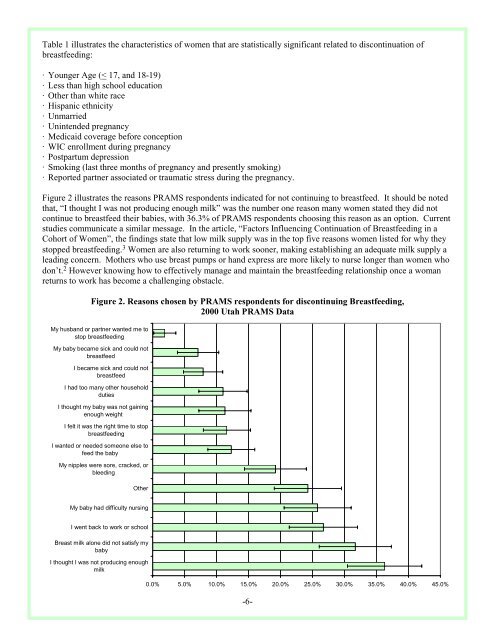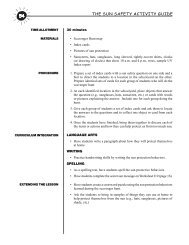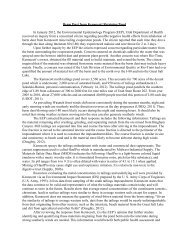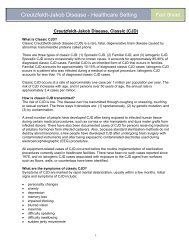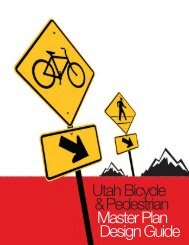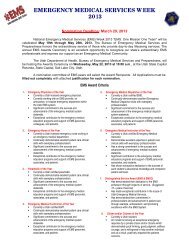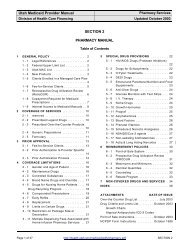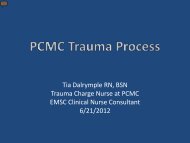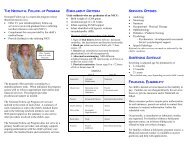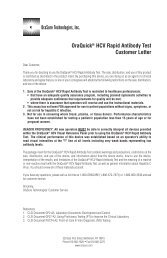Breastfeeding In Utah - Utah Department of Health - Utah.gov
Breastfeeding In Utah - Utah Department of Health - Utah.gov
Breastfeeding In Utah - Utah Department of Health - Utah.gov
Create successful ePaper yourself
Turn your PDF publications into a flip-book with our unique Google optimized e-Paper software.
Table 1 illustrates the characteristics <strong>of</strong> women that are statistically significant related to discontinuation <strong>of</strong><br />
breastfeeding:<br />
· Younger Age (< 17, and 18-19)<br />
· Less than high school education<br />
· Other than white race<br />
· Hispanic ethnicity<br />
· Unmarried<br />
· Unintended pregnancy<br />
· Medicaid coverage before conception<br />
· WIC enrollment during pregnancy<br />
· Postpartum depression<br />
· Smoking (last three months <strong>of</strong> pregnancy and presently smoking)<br />
· Reported partner associated or traumatic stress during the pregnancy.<br />
Figure 2 illustrates the reasons PRAMS respondents indicated for not continuing to breastfeed. It should be noted<br />
that, “I thought I was not producing enough milk” was the number one reason many women stated they did not<br />
continue to breastfeed their babies, with 36.3% <strong>of</strong> PRAMS respondents choosing this reason as an option. Current<br />
studies communicate a similar message. <strong>In</strong> the article, “Factors <strong>In</strong>fluencing Continuation <strong>of</strong> <strong>Breastfeeding</strong> in a<br />
Cohort <strong>of</strong> Women”, the findings state that low milk supply was in the top five reasons women listed for why they<br />
stopped breastfeeding. 3 Women are also returning to work sooner, making establishing an adequate milk supply a<br />
leading concern. Mothers who use breast pumps or hand express are more likely to nurse longer than women who<br />
don’t. 2 However knowing how to effectively manage and maintain the breastfeeding relationship once a woman<br />
returns to work has become a challenging obstacle.<br />
Figure 2. Reasons chosen by PRAMS respondents for discontinuing <strong>Breastfeeding</strong>,<br />
2000 <strong>Utah</strong> PRAMS Data<br />
My husband or partner wanted me to<br />
stop breastfeeding<br />
My baby became sick and could not<br />
breastfeed<br />
I became sick and could not<br />
breastfeed<br />
I had too many other household<br />
duties<br />
I thought my baby was not gaining<br />
enough weight<br />
I felt it was the right time to stop<br />
breastfeeding<br />
I wanted or needed someone else to<br />
feed the baby<br />
My nipples were sore, cracked, or<br />
bleeding<br />
Other<br />
My baby had difficulty nursing<br />
I went back to work or school<br />
Breast milk alone did not satisfy my<br />
baby<br />
I thought I was not producing enough<br />
milk<br />
0.0% 5.0% 10.0% 15.0% 20.0% 25.0% 30.0% 35.0% 40.0% 45.0%<br />
-6-


